For Amelia, director Mira Nair called upon Mr. X to deliver photorealistic planes, clouds and crowds to help tell the story of the famous American aviator. Mr. X visual effects supervisor Wojciech Zielinski talks to fxguide about the production.
fxg: What was your overall brief in terms of the look and feel of the effects for the film?
Zielinski: In our first meeting Mira was quite explicit about what was expected from us. She wanted the CG elements to be discreet and photorealistic, supporting the narrative of Amelia Earhart’s personal and public life, rather then drawing attention to themselves. Based on her directions we created various concepts to illustrate our stylistic approach. In addition we pre-visualized three major sequences: Vega crossing Atlantic, Electra crash and Ticker tape parade. We had a lot of freedom to design these sequences. We took the lead and presented our ideas to the director.
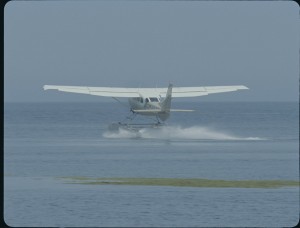
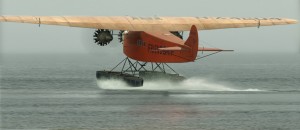
fxg: Can you take me through how your CG planes were modeled? What was involved in cyber-scanning them and re-creating detail?
Zielinski: One of the main challenges of this project was to match our CG assets – the airplanes – with life size replicas built by the production. We knew that in the movie they would cut between real and CG, back and forth and there was no room for a mistake. As a first step we cyber-scanned the airplanes to obtain a sound foundation for our assets.
The cyber-scan data we received from the vendor was good but the resolution of the small detail wasn’t quite there. We went back to shoot reference images which were later used by our artists to re-create the fine detail. At the same time we photographed the replicas using a cross polarized rig. It gave us excellent material to generate color and spec maps. With a few tweaks to our shaders the airplanes were ready to fly.
fxg: What were some of the challenges in making the planes look right in both daytime and night-time shots?
Zielinski: We didn’t have any major problems with day time shots as we had quite an extensive HDRI library and tons of reference images to work with. However, the night time shots were a different ball game. As a first step we had to define the look of these shots. We generated a few style frames which were presented to the director for approval. Once the concept was approved our lighting team came up with a hybrid solution, traditional three point lighting mixed with IBL using fake HDRI maps. We rendered our airplanes using multiple passes and light layers. Our comp artists did an excellent job with mixing and balancing all the elements together.
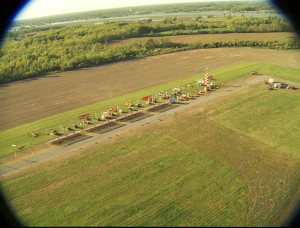
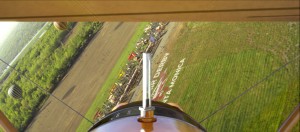
fxg: Can you talk about the water landing and take-off sequences?
Zielinski: The obvious challenge was water interaction. We knew that with the limited time and budget we would not be able to solve it on digital level. We came up with the idea of shooting a real float plane and replacing it with a CG airplane. This approach was extremely beneficial Рwe not only got the desired water interaction but also perfect reference for airplane animation and lighting.
There were a few challenges down the road however, the airplane we shot had its floats and the spread between them was considerably smaller than our CG asset. We had to re-design our digital rig to allow for floats spread adjustment on a shot by shot basis. At the end all shots were augmented with CG water splashes and spray.
fxg: Can you break down the crash landing sequence?
Zielinski: At the start of the project we had various discussions to determine how we wanted to solve the crash sequence. Knowing that the director would ask for many close-ups, we decided to go for a combination of practical and digital elements. Production provided us with the shell of the airplane mounted on an articulated crash rig which was towed along the runway during the shoot.
Our first step was to paint out the huge rig, we had to rebuild huge chunks of the runway and airplane. After the paint-out work was approved, we tracked the shots and added all the missing parts like spinning propellers and landing gear. The shots were then enhanced with CG fire, sparks, smoke and flying debris.
fxg: What kind of cloud reference did you gather for your CG cloud work?
Zielinski: That’s a great question, one would think you can find everything on web – including clouds. But when it comes to something specific the choices are limited. And that was the case with cloud reference. Luckily during production time I had to travel by air a lot between locations. In addition, I spent a lot of time with the aerial unit. These gave me perfect opportunities to build our own library. By the end of the project it was comprised of over 1000 images.
fxg: What pipeline did you employ to create the CG clouds?
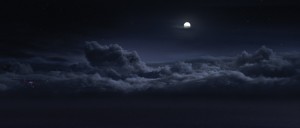
Zielinski: The first step in the cloud pipeline was blocking. Based on approved pre-vis and sequence style frames our layout team created cloud formations in Maya using placeholder spheres that would represent the cloudbanks. At the same time we refined camera and airplane animation to make sure the shots had the desired feel and composition. When these were approved the surface shapes were passed on to the VFX team to be converted into true volumes.
Once the polygonal clouds were voxelized in Houdini, procedural volume shaders were used to provide finer detail by modifying the density within each cloud. The FX team also handled lighting for the cloud environments and rendered them in Mantra using multiple passes and light layers. Rendering cloud elements out by depth and by light allowed the compositors total freedom to control the color and density of the clouds and minimize expensive re-renders.
